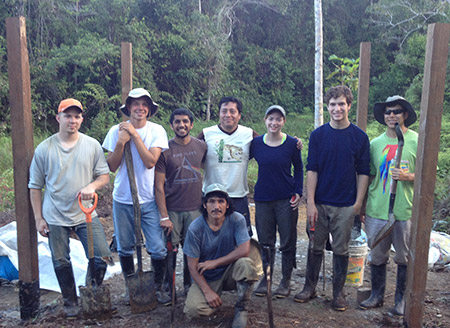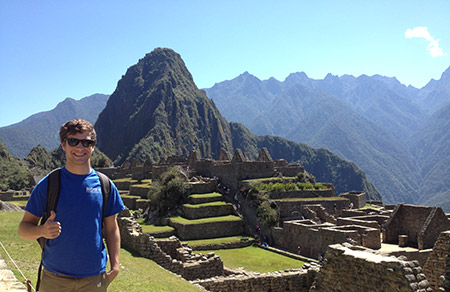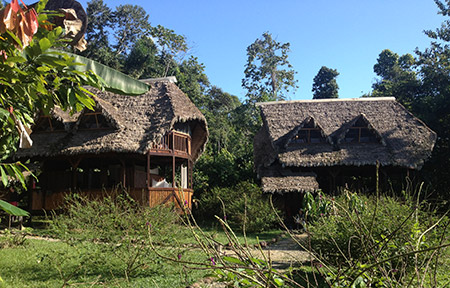Mark Nichols: Student Report from 2013 Alternative Summer Break in Peru

If you ever get the opportunity to visit Peru, go!
My Peruvian adventure began in the Lima airport, a very intimidating place if you speak little Spanish (like me). The minute I reached the main terminal, I was swarmed by taxi drivers insisting that I needed a cab. After politely saying “no” and receiving the boarding pass for my connecting flight to Cuzco, I headed to the departure gate. When it came time to board the plane, I noticed another American and asked him the obvious question of where he was going. Sure enough, he was going to Cuzco. We talked about his week-long stay in Lima, how similar the city was to New York, and about why he came to Peru. Dan, if I remember correctly, was a high school history teacher from Los Angeles who had taken a month off of work to explore the country and experience the culture. We intermittently talked about our travel plans on the hour-long flight until we reached Cuzco. Dan and I said our goodbyes, and I exited the airport and met our temporary guide Jandy. She very easily got us a cab and took us to the hostel we would be staying at for the next few days.
After a refreshing nap, Jandy took us out to explore the city of Cuzco. and visit the markets. First we visited the textile market, which housed many independent sellers selling everything from homemade sweaters crafted from alpaca fur to prepackaged t-shirts made from machine-sewn cotton. Later we went to San Pedro, an open-air food market frequented by the locals. Jandy took us over to a fruit stand and let us sample about a dozen different fruits mostly unique to South America. The rest of the day was spent wandering around the city seeing important landmarks and taking hundreds of pictures.

The next morning we woke up at 4:00 a.m. for a two-hour bus ride to the train station. The train ride to Machu Picchu was gorgeous. Along the way were beautiful snow-capped mountaintops and small farming towns. Once we arrived to the town at the base of Machu Picchu, we hopped on a small bus that would take us to the top; the road up was perilous at best. After that, we took a small hike and reached the top. Our guide, who was very knowledgeable about the history of Machu Picchu, gave us an hour-long tour of the site. He explained the religious significance of the once Incan capital and the series of small plateaus used for farming and to collect water. Once our tour was over, we headed to the exit to get our passports stamped and to make our way back to the hostel.
After a good night’s sleep, we boarded another bus to make the ten-hour journey to the Manu Biosphere Reserve. The ride was filled with mostly unpaved, zigzagging roads through the Andean Mountains. Nine and a half hours later, we reached the Madre de Dios River where we began a half-hour boat ride. The smooth ride was a pleasant change from our hot, bumpy bus. Thirty minutes later we arrived at the Manu Reserve, a collection of five medium-sized buildings, pods as they called them, which were nestled along the river. After a brief tour, an introduction to the rest of the volunteers, and a hardy dinner, I went right to bed and fell asleep in a matter of minutes. Our pod was a few feet from a fast-flowing creek; the relaxing sound of water and the pleasant noises of wildlife made for a good night’s sleep.
We woke up the next morning to the thundering sound of heavy rain. We hung around the reserve for a few hours hoping for the rain to stop before our hike to the build site. After realizing it was not going to stop, we put on our boots and ventured out. After a short fifteen-minute walk we reached the swamp, which was the site for the new observation deck. The locations of the columns were marked with a grid of string tied to some wood, a simple yet effective setup. We did some quick surveying and then decided to head back for a quick nap before dinner. The next few days were spent gathering materials. We made about ten trips down to the creek bed to collect rocks to be used in the concrete mix. We also made a couple trips down to Madre de Dios to get a few sacks of very fine sand, weighing fifty pounds each, to add to the mix.

The next day the rain had finally stopped and we were ready to pour the footers for the two downhill columns. After we mixed the concrete and emptied the water out of the holes, we made the molds for the footers and poured the concrete with the help of local engineer Rubin and Manu employee Juven, or Rambo as we called him. Once those were poured, we went back for a quick lunch then returned to install the next two columns. We positioned the wooden posts, poured the concrete, and used a few thin logs inserted into the ground and nailed to the post to hold the column in place while the concrete dried. The next day we continued this process and installed the last two wooden columns. After finishing early, we went for a swim in the river with fellow volunteers Marcus and Dan of the United Kingdom. The water was very cold, which was perfectly acceptable on that hot of a day.
For our last day in the Amazon, our wonderful guide Ronnie took us for a long hike to the primary forest. Unlike most of the forest surrounding Manu, this area had not been heavily logged and was home to more hardwood trees and a wider variety of plant and animal life. Later that day, a soccer game broke out between all of the volunteers and we soon discovered the athletic abilities of our British and Scottish friends.
The next morning, we packed up our gear, said goodbye, and hopped on the boat back to the main road. After another exhausting bus ride, we made it back to Cuzco, where we spent our last night wandering around and purchasing food from the local grocery store. That morning, we had a few hours to kill so we went out to do some last-minute shopping and sightseeing. When it came time to leave, our guide Ronnie took us to the airport where we would say goodbye to him and catch a plane to Lima. After a not-so-exciting layover and me losing my immigration visa, we all went to our respective gates to catch our flights home.
I had an absolutely fantastic time in Peru and would gladly do it again. I am very thankful to Judith Mallory for arranging and leading this trip, as well as to the University of Tennessee for providing me and countless others the opportunity to travel the world and to experience foreign cultures.